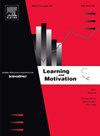Stereotype threat effects on motor performance and learning: A systematic review of 30 years
IF 1.7
4区 心理学
Q3 PSYCHOLOGY, BIOLOGICAL
引用次数: 0
Abstract
Stereotype threat can impair performance in individuals who fear confirming a negative stereotype about their group. This study systematically analyzed its effects on motor performance and learning observed in the last 30 years. Searches in Web of Science, PubMed, Scopus, and PsycInfo, conducted in March 2025, identified 808 studies published between 1995 and March 2025, of which 65 met the inclusion criteria, covering 79 experiments and 5734 participants. Most experiments focused on motor performance (n = 65) rather than learning (n = 14). Gender stereotypes were the most studied (n = 45), followed by age (n = 13), race (n = 7), weight (n = 3), sports status (n = 2), nonexerciser (n = 2), disability (n = 1), height (n = 1), and socioeconomic status (n = 1). Some studies examined combined stereotypes (e.g., gender and race, n = 2). Adults were the most studied population, followed by children, elderly individuals, and adolescents. Explicit manipulation was the most used, followed by combined explicit-implicit and solely implicit approaches. Few studies assessed underlying mechanisms, as perceived competence, self-efficacy, and nervousness. Most findings indicate that stereotype threat negatively affects motor performance and learning across different populations and manipulation types. The limited research on motor learning, different stereotype types, and diverse populations highlights the need for further studies to clarify the mechanisms of stereotype threat and its effects on motor skill acquisition. Finally, we recommend research focused on developing strategies to mitigate the detrimental impact of stereotype threat on motor performance and learning.
刻板印象威胁对运动表现和学习的影响:30年的系统回顾
刻板印象威胁会影响那些害怕证实对自己群体的负面刻板印象的人的表现。本研究系统分析了近30年来观察到的它对运动表现和学习的影响。2025年3月,在Web of Science、PubMed、Scopus和PsycInfo中进行了检索,确定了1995年至2025年3月期间发表的808项研究,其中65项符合纳入标准,涵盖79项实验和5734名参与者。大多数实验关注的是运动表现(n = 65)而不是学习(n = 14)。性别刻板印象是研究最多的(n = 45),其次是年龄(n = 13),种族(n = 7)、体重(n = 3),运动状态(n = 2),做运动(n = 2),残疾(n = 1),高(n = 1),和社会经济地位(n = 1)。一些研究考察了综合的刻板印象(例如,性别和种族,n = 2)。成年人是研究最多的人群,其次是儿童、老年人和青少年。显式操作是最常用的,其次是显式-隐式结合方法和完全隐式方法。很少有研究评估潜在的机制,如感知能力、自我效能和紧张。大多数研究结果表明,刻板印象威胁对不同人群和操作类型的运动表现和学习产生负面影响。由于对运动学习、不同刻板印象类型和不同人群的研究有限,因此需要进一步研究刻板印象威胁的机制及其对运动技能习得的影响。最后,我们建议研究集中于制定策略,以减轻刻板印象威胁对运动表现和学习的不利影响。
本文章由计算机程序翻译,如有差异,请以英文原文为准。
求助全文
约1分钟内获得全文
求助全文
来源期刊

Learning and Motivation
Multiple-
CiteScore
2.90
自引率
0.00%
发文量
53
期刊介绍:
Learning and Motivation features original experimental research devoted to the analysis of basic phenomena and mechanisms of learning, memory, and motivation. These studies, involving either animal or human subjects, examine behavioral, biological, and evolutionary influences on the learning and motivation processes, and often report on an integrated series of experiments that advance knowledge in this field. Theoretical papers and shorter reports are also considered.
 求助内容:
求助内容: 应助结果提醒方式:
应助结果提醒方式:


